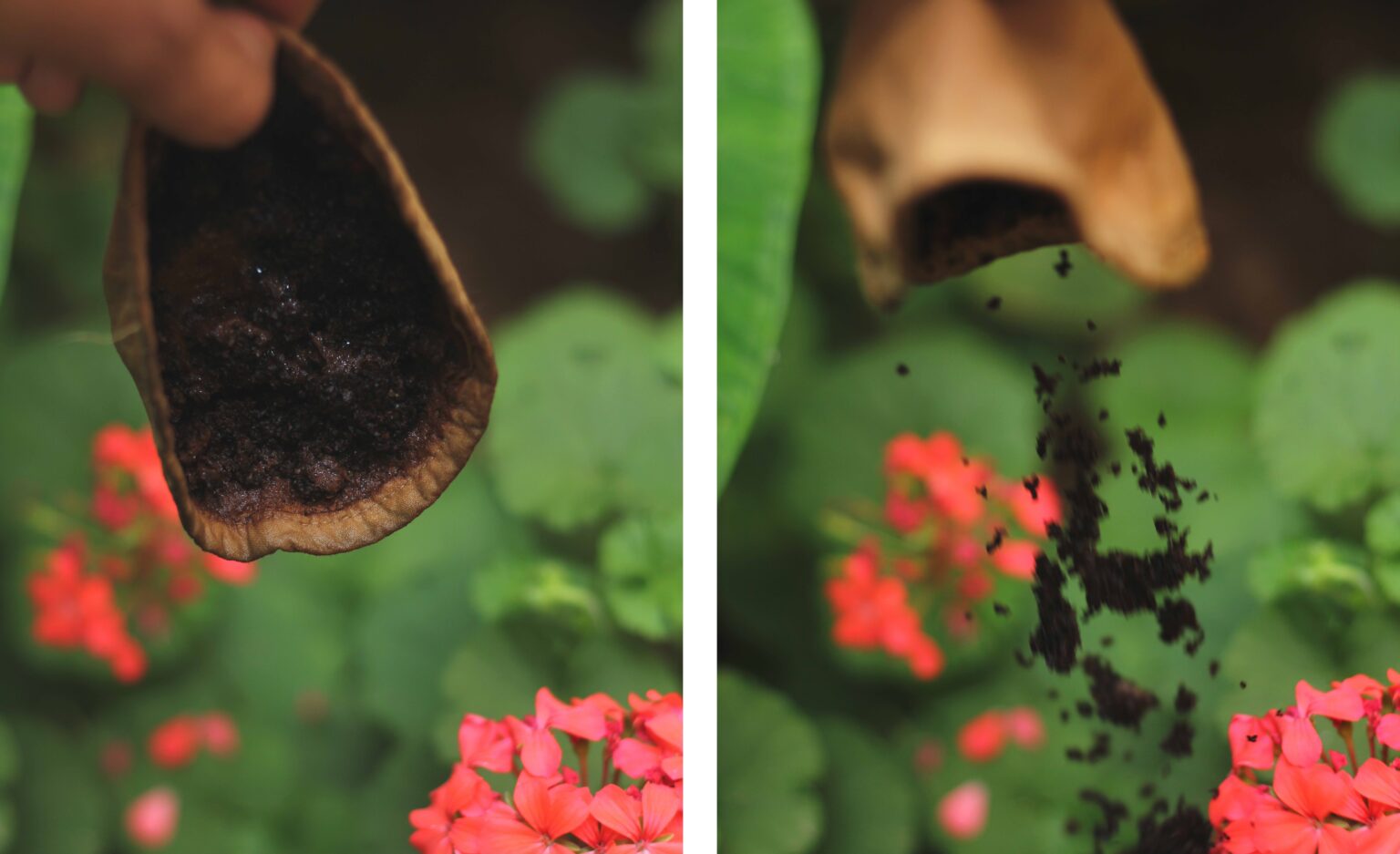It’s no surprise that our khadi cloth filters have a dedicated fan base! They produce a richer brew than conventional paper filters and can be used hundreds of times before you need to get rid of them.
Caring for your cloth filter should be pretty straightforward but because these are handwoven and made from unbleached cotton (aka one step better for people and the planet than other cloth filters on the market!), here are some special how to’s for our cloth filters:
Rinse
Rinse your cloth filter a few times with hot water before you begin brewing.

Empty
After brewing, empty the filter of as much of the coffee grounds as possible. We use our spent grounds for the geranium and rose plants in our Roastery but any plants that like acidic soils will enjoy your coffee!

Wash
Wash the empty cloth filter in running water (warm is preferable, but no worries if not). The filter will be gradually stained with coffee, this is perfectly normal and it will not really affect your brew. Do not use detergent, you will never be able to get rid of the soapy flavour from your filter.
Hang Dry and/or Store
After rinsing, you have two equally good options, so do what’s convenient. You can either hang your filter to dry with a clothes peg on a dryer. Thereafter, store your filter in a cool, clean and dry place. Or, you can store the filter in an airtight box or ziplock and keep away in the freezer till you brew next.

Periodically Boil
Every 2-3 months, boil the filter in fresh water to sterilise. Once your cloth filter starts to show signs of wear like holes and tears, it’s time to discard.
Each cloth filter saves about a 100 paper filters. There’s no question that we should use cloth filters. If you can find a cloth filter that’s khadi, handwoven by small-scale weavers and made from unbleached cotton, you’ve really made your coffee better – no question about it
The onus should be on us to trial and error a brewing method that gives you the desired flavour notes.



